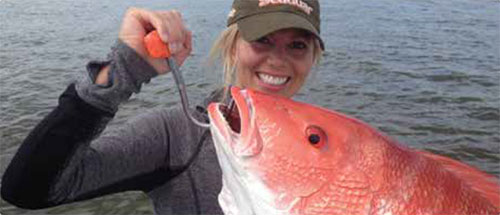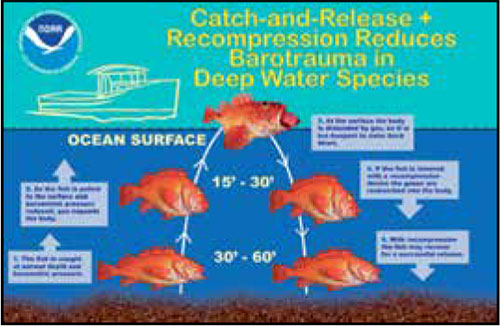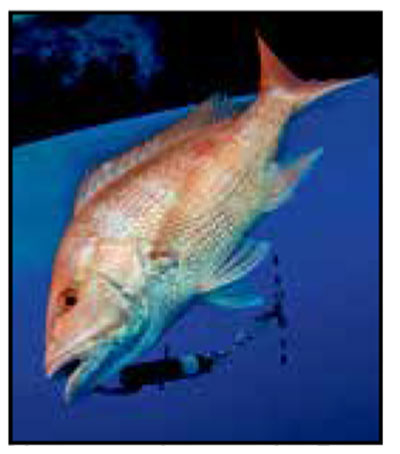What Happened to Our Fish
An Education Series for Coastal Anglers
For Recreational Fisherman by Recreational Fisherman

The public’s fishery has been sold by our politicians and political appointees for the personal profits of a few, creating “overnight millionaires”. The profits of these fifty largest commercial fishermen (often termed the “Sea-Lords”) have funded the campaigns of select congressmen – at the expense of consumers, charter/head boat businesses and recreational fishermen.

We’ve seen the wreckage from this money grab. Now it’s time for common sense management – WITH THE FOCUS ON THE FISHERY, NOT ON PROFITS.
 WE MUST:
WE MUST:
• Begin with a factual evaluation of the size and health of the fishery. Under federal management this has been a complete failure, as admitted under oath by the National Marine Fisheries Service. The states bordering each fishery must be authorized to take over their adjoining fisheries’ data collection and management – it’s funding, functions, and enforcement.
• Recognize that the fishery is a public resource and must be available to all. It must not be controlled by a handful of commercial fishermen who milk the nation’s resource without paying for their harvest, at the expense and exclusion of all others.
• Protect and grow every fishery by limiting access during spawning seasons. How ludicrous that the present federal Gulf red snapper “management” establishes the charter and recreational fishing “seasons” just as the sows are ready to lay thousands of eggs!
• Initiate “slot” sizes for all commercial and recreational fishermen with undersized juveniles (pre-breeding size) and large sows being released by the proven techniques now available. New technology (www.seaqualizer.com) allows deep-water fish like the red snapper to be returned to depth to reproduce. A single sow can produce over FOUR BILLION eggs in her lifetime – let her do so!
• Uniformly manage the fishery. “Good management” techniques must not differ by what category of fisherman hooks the fish. If the proper decision for the health and growth of the publicly-owned fishery is to release juveniles to reach their reproductive size, then that size should be the same throughout the fishery regardless by whom the fish is caught. Currently a commercial catch must be 12” but a recreational catch must be 16”; this exposes a system designed for business profitability and not as claimed for the “sustainability” of the fishery. Since the red snapper’s reproductive size is 15” – how can killing a 12” fish that has never reproduced “sustain” the fishery?
• Imitate the Australian sustainability model of the Great Barrier Reef. Many fish, like the red snapper, do not migrate 20 miles during their entire lifetime. Accordingly, we can establish rotating “no fishing zones” to provide healthy stock recovery and growth.
• Address the demand of restaurants by augmenting the commercial catch with aquaculture, as is done with red drum, shrimp, catfish, salmon, trout, and many other species. It is estimated this could double the Gulf of Mexico’s commercially available red snapper without increasing the pressure on the fishery from commercial fishing.
• Replace monetary greed with actually managing our public’s resource. As is done with the harvesting of our other natural resources, such as timber and petroleum, all desiring access should pay access fees, proportionate to their consumption, to support the national deficit, enforce regulations to protect the resource, and to initiate programs to grow the resource for future generations (reef building, habitat restoration, etc.)
The federal government’s “one size fits all” approach to fisheries management can’t ever succeed. In the Gulf of Mexico alone there are a dozen distinct ecosystems with differing variables. We must transfer our fisheries management from Washington D.C. to the bordering sates where people understand the fishery and have a vested stake in the success of its management for all interests. The federal government’s “management” has been an overwhelming boondoggle. It’s only successes have been building political “power bases” and pouring millions into private bank accounts of a handful of commercial fishermen who, in turn, have bolstered the campaigns of select congressmen and other officials.
A common-sense bill has been proposed in the U.S. House of Representatives to begin fixing this mess; it transfers fisheries management to the bordering states. This bill is the “Modernizing Recreational Fisheries Management Act HR2023”. If your congressman has co-sponsored HR2023, he’s part of the solution and has his constituents’ interests at heart. If he has not, he is perpetuating the corrupted system and needs your encouragement to represent YOU! If he’s writing letters that “sound” supportive, but is not signing on as a HR2023 supporter – he is marketing himself and you’re getting lip service.
Stay abreast and follow the issue on our Facebook page “WhatHappenedToOurFish?” Email RecreationalFishermen@gmail.com.

